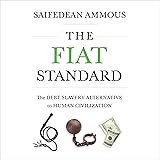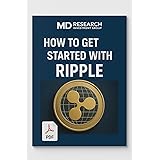The cryptocurrency market, often characterized by its inherent volatility, presents both significant opportunities and considerable challenges for investors. As explored in the accompanying video, the outlook for the crypto landscape in 2022 has been a subject of diverse opinions, ranging from cautious optimism to outright skepticism. However, a closer examination of underlying technological advancements and shifting user behaviors reveals a compelling narrative for continued growth, particularly within specific sectors of the altcoin market. This analysis delves into the critical trends and promising altcoins that are anticipated to shape the investment strategies throughout the year, offering an expert perspective on the evolving digital asset ecosystem.
Navigating the 2022 Cryptocurrency Market: Key Altcoin Trends and Investment Predictions
The year 2021 was widely recognized as a period of significant expansion for Ethereum and various Layer 1 blockchain solutions. In contrast, 2022 is projected to build upon this foundation, particularly with the anticipated rise of Layer 2 scaling technologies. These solutions are becoming increasingly critical for addressing the scalability and transaction cost issues that have historically plagued leading Layer 1 networks. Understanding their development and adoption is paramount for those seeking to identify the best altcoins to invest in 2022.
The Ascendance of Layer 2 Solutions: Polygon Leading the Charge
The importance of Layer 2 solutions for enhancing blockchain efficiency cannot be overstated. While several promising projects like Optimism and Arbitrum are in development, their token launches are yet to materialize. However, Polygon (MATIC) stands out as a Layer 2 scaling solution that is already operational and exhibiting remarkable metrics, positioning it as a top contender for investment. Its infrastructure enables significantly faster and cheaper transactions, which is crucial for fostering broader adoption.
Considerable traction is being gained by Polygon, which averages 300,000 daily active users (DAUs) in terms of sending addresses. Furthermore, an impressive addition of over 200,000 unique addresses has been observed for 13 consecutive weeks, underscoring its rapid growth. This unprecedented level of engagement for an emerging smart contract platform suggests a strong upward trajectory, indicating its potential to capture a substantial share of the market as Web3 applications continue to proliferate.
The cost-efficiency on the Polygon network is a major draw for both developers and users. Transaction fees on Matic are notably low, often falling under 2 cents on average. Even more complex operations, such as DeFi transactions, are typically processed for less than 10 cents, while NFT transactions usually incur fees below 23 cents. These low costs are deemed essential for onboarding mainstream users who may be deterred by the higher gas fees prevalent on other networks. This economic accessibility is a strong indicator of Polygon’s future potential.
Beyond transactional advantages, Polygon is increasingly recognized as a preferred chain for Web3 experimentation. A staggering 1.8 million smart contracts were deployed on Matic by developers in a recent week, significantly overshadowing the 105,000 deployed on Ethereum within the same timeframe. This suggests that developers are actively choosing Polygon for building and testing new decentralized applications, which could lead to a thriving ecosystem. Such robust developer activity is a strong bullish signal for the network’s long-term viability.
Moreover, Polygon’s ecosystem is also flourishing in the realm of Non-Fungible Tokens (NFTs), which are widely regarded as a key gateway for mainstream users into the Web3 space. In December alone, 1.8 million NFTs were sold on OpenSea Polygon, a monthly figure that continues to rise. With over 800,000 total users having interacted with the platform historically, Matic is rapidly establishing itself as a prominent NFT hub. The confluence of low fees, developer adoption, and a burgeoning NFT market clearly positions Polygon as a leading altcoin to watch in 2022.
The Metaverse Phenomenon: Blue-Chip Altcoins Gain Momentum
The metaverse, a persistent and interconnected virtual environment, represents another significant trend poised for substantial growth in 2022. While opportunities exist within smaller-cap protocols, the established “blue-chip” metaverse altcoins are considered to be particularly strong investment vehicles. These platforms are not merely concepts; they are actively building rich virtual worlds and attracting significant partnerships, which are critical for long-term value creation.
Decentraland (MANA) is a prime example of a metaverse blue-chip that is consistently attracting high-profile events. The Luxury Marketplace UNXD, which operates on the Polygon network, is set to host a Metaverse Fashion Week within Decentraland from March 24th to 27th. This event, Decentraland’s first fashion program, will feature virtual catwalk shows, pop-up shops, and afterparties. Users will be able to view virtual fashion collections and purchase outfits for their online avatars, marking a significant step towards integrating high-fashion with the digital realm. This type of brand engagement underscores the burgeoning commercial potential of virtual real estate.
Similarly, The Sandbox (SAND) is another leading metaverse platform that continues to forge strategic partnerships with major brands and corporations. These collaborations are crucial for expanding its ecosystem and bringing new users into its virtual world. Notably, PricewaterhouseCoopers (PwC) Hong Kong recently acquired virtual land within The Sandbox, an Ethereum-based VR and metaverse platform. This move by a “Big Four” accounting firm highlights the increasing institutional interest in the metaverse. PwC stated that this acquisition is intended to “create value through innovative business models” and introduce “new ways to engage with…customers and communities.” Such institutional endorsements validate the long-term potential of these virtual economies.
The mainstream adoption of cryptocurrencies and NFTs has been significantly fueled by figures like Snoop Dogg, who actively promotes his virtual land within the metaverse, specifically The Sandbox. His public discussions and showcases contribute to broader awareness and excitement, attracting a diverse audience to these platforms. The increasing visibility and active participation from both celebrities and major corporations suggest that the metaverse is moving beyond niche enthusiasm to become a significant cultural and economic force. These developments firmly establish Decentraland and The Sandbox as pivotal altcoins for metaverse exposure in 2022.
Layer 1 Ecosystems: The Enduring Strength of Competitors and Ethereum
While Layer 2s and the metaverse are garnering considerable attention, Layer 1 blockchain solutions are still projected to experience continued success in 2022. The mature stages of a crypto bull market often see an influx of retail investors who prioritize user experience (UX/UI) and low transaction fees over intricate decentralization ethos. Consequently, Layer 1 networks that offer robust ecosystems and efficient operations are expected to maintain strong momentum, often complementing Ethereum’s foundational role.
Fantom (FTM) is emerging as a formidable Layer 1 competitor, with its ecosystem now boasting over 200 projects. The rapid expansion of dApps and services built on Fantom Opera indicates its growing appeal to developers and users alike. Its vast potential for scalability and low-cost transactions is expected to attract more users seeking alternatives to higher-fee environments. As the blockchain space becomes more diverse, platforms like Fantom are carving out significant niches, indicating their importance in a multi-chain future.
Solana (SOL) also makes a strong case for continued growth, particularly due to its user-friendly interface and burgeoning NFT ecosystem. The native Solana wallet, Phantom, is praised for its exceptional UX/UI, making it highly accessible for newcomers. Solana’s approach, while recognizing its tradeoffs in decentralization for speed and cost-efficiency, appeals to a segment of the market focused on practical utility. The platform’s ability to host a vibrant NFT market, coupled with its focus on efficient transaction processing, positions it well for further adoption in 2022.
Despite the emergence of strong competitors, Ethereum (ETH) is widely expected to retain its position as the leading open-source dApp platform. Its undeniable dominance is reflected in its Total Value Locked (TVL) in DeFi protocols, which stands at an impressive $160 billion. In stark contrast, no other single chain commands more than $18 billion in TVL, and the combined TVL of all other chains does not surpass that of Ethereum. These metrics underscore Ethereum’s foundational role in the decentralized finance landscape, solidifying its status as a core asset.
Ethereum’s network metrics continue to climb, with the number of non-zero Ethereum addresses reaching a record high of over 71 million, according to Glassnode. This expansion is largely attributed to the explosion in popularity of NFTs, many of which are minted and traded on the Ethereum blockchain. The network effect, robust developer community, and the sheer volume of capital secured on Ethereum ensure its continued relevance and importance. Therefore, Ethereum remains a critical component of any diversified crypto portfolio in 2022, despite the rise of alternative Layer 1s.
Bitcoin’s Enduring Value and DeFi Innovation: Aave’s Real World Assets
Bitcoin (BTC) is expected to maintain its position as the market leader in terms of market capitalization, continuing to be perceived as a store of value within the broader financial world. On-chain metrics consistently suggest a healthy and expanding network. For instance, Bitcoin wallet addresses created in November inched toward 1 million, demonstrating a steady inflow of new users. The increase of almost 1 million Bitcoin wallet addresses during that month highlights a potential influx of retail interest, reinforcing its status as a foundational digital asset.
Innovation within the decentralized finance (DeFi) sector is also broadening its scope, exemplified by platforms like Aave. While Aave has long enabled users to borrow and lend cryptocurrencies, its recent integration with Centrifuge marks a significant advancement. Centrifuge’s Real World Assets (RWA) Market is now live on Aave, allowing users to earn yield against non-crypto assets such as real estate. This initiative bridges the DeFi space with traditional financial assets, creating new avenues for liquidity and investment. The ability to collateralize and earn yield on real-world assets is a game-changer for the DeFi ecosystem, potentially drawing in a new wave of institutional and individual investors. This innovative step further solidifies Aave’s position as a forward-thinking platform within the DeFi space, offering compelling reasons for its inclusion among the key altcoins to observe in 2022.







